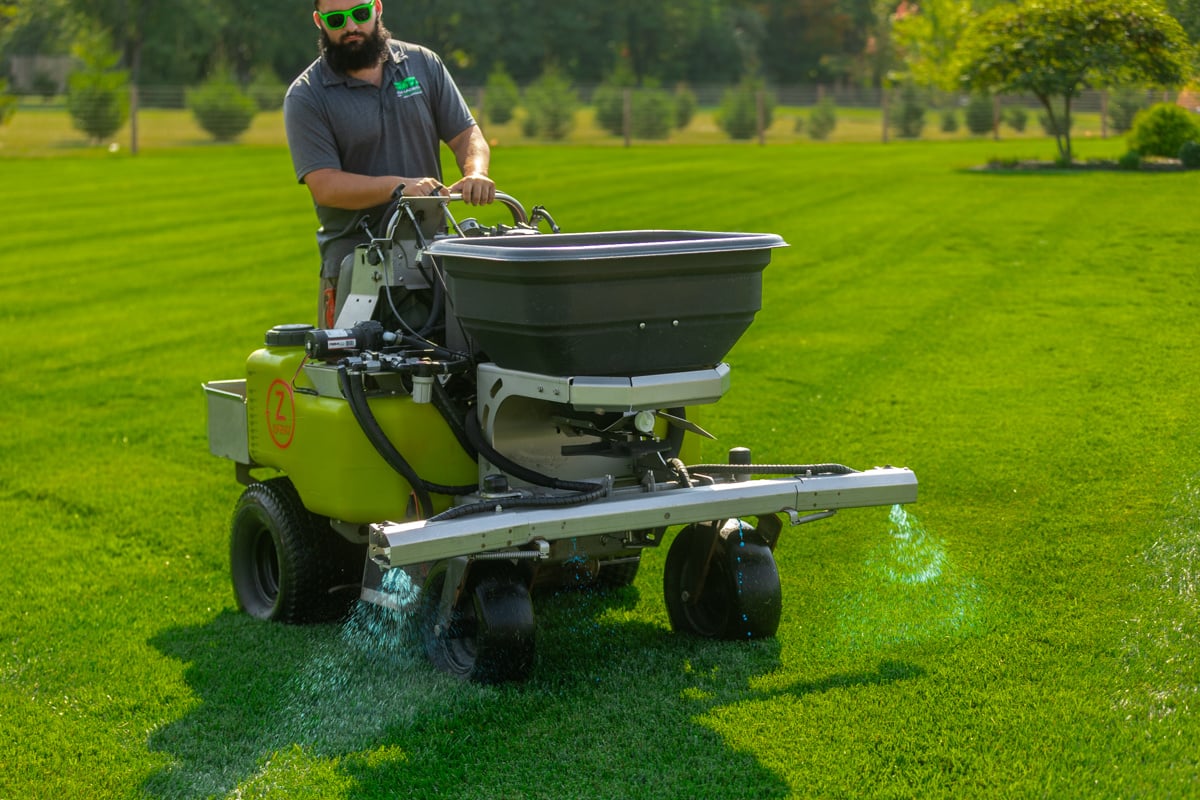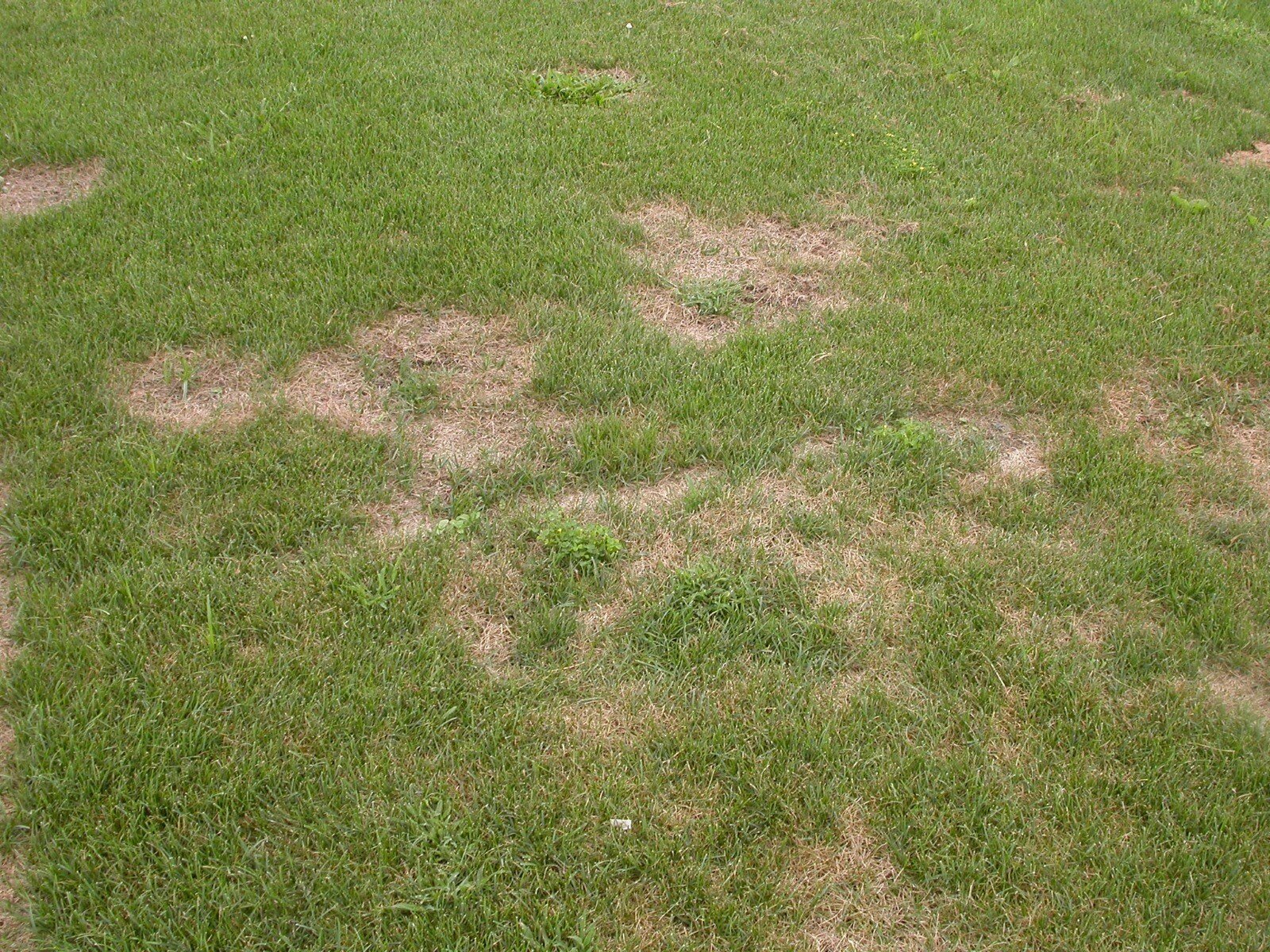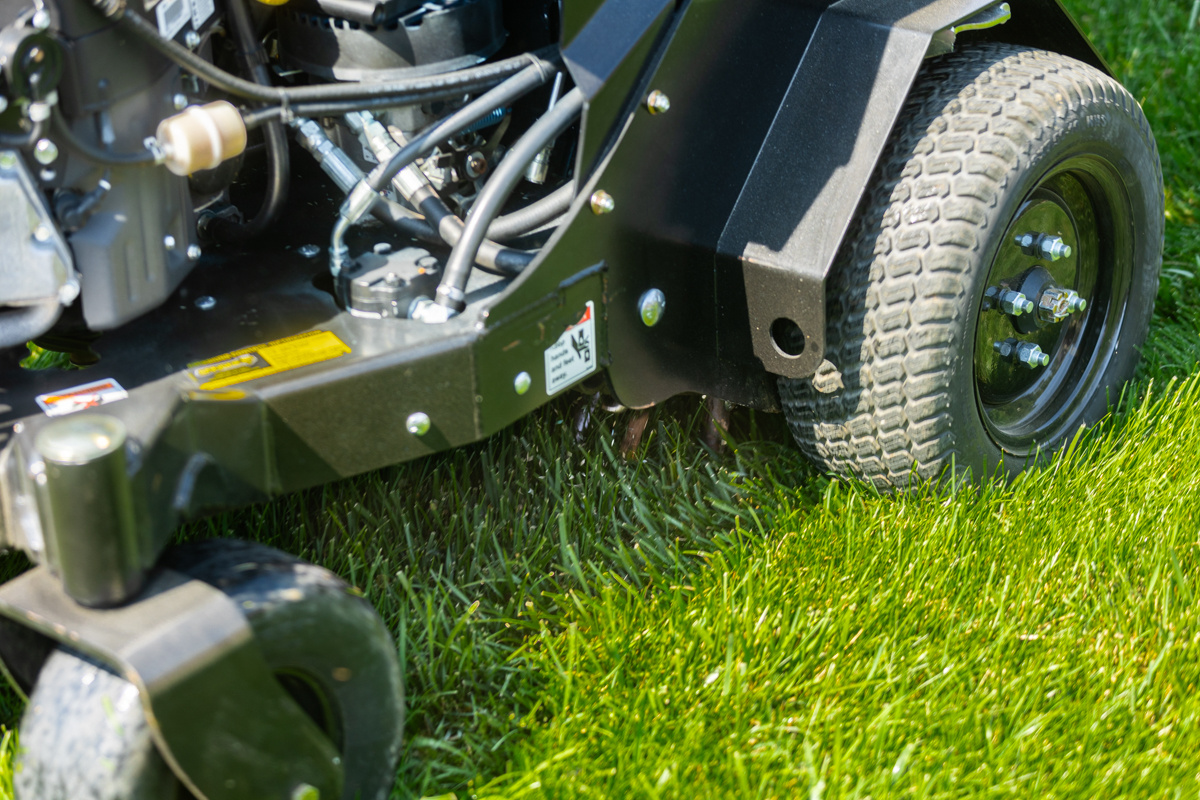

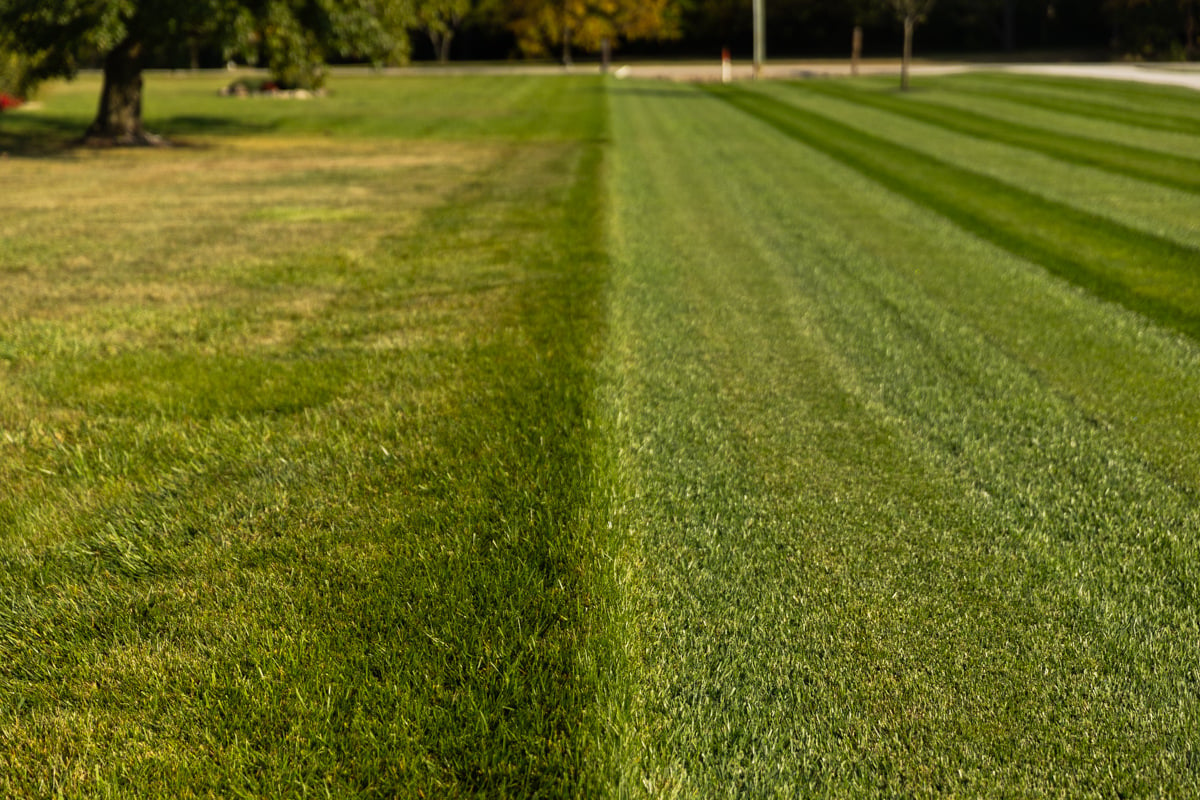
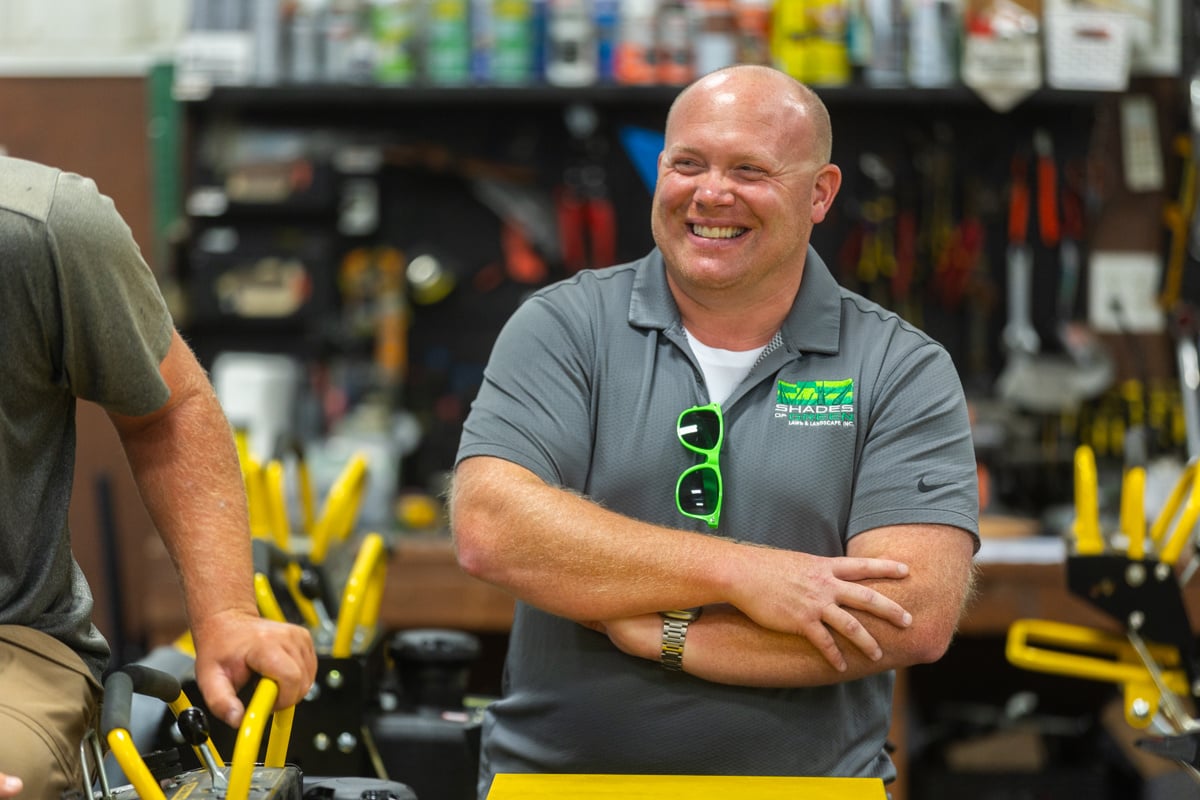
Between the blazing sun, random dry spells, and grass that seems to throw in the towel by July, it’s no wonder so many Indiana lawns end up looking more fried than fresh.
So what’s the secret? The key to keeping your grass green in the heat is giving it the right care at the right time: think smart watering, proper mowing, seasonal treatments, and a little extra support when stress starts to show.
Let’s walk through exactly how summer heat affects your lawn, how to spot early signs of trouble, and what you can do to keep your turf looking great all season long.
Summers in Indiana can feel like standing in front of an open oven, and your lawn? It feels the same way. When the temperatures start to rise, and the rain decides not to show up for a few weeks, your grass goes into survival mode. It’s thirsty, stressed, and trying to hang on.
The big issue? Grass needs water to look good. Without it, it starts to lose that lush green glow and instead feels more crunchy and looks more beige. Stress from heat and drought slows everything down:
And the more stressed your lawn is, the more likely it is to get patchy and weedy. The types of grass in your lawn can also contribute to how quickly and severely summer heat affects its health, with Rye Grass being the first one to call it quits when the going gets hot.
So, how do you know your lawn is stressed out? First up: color changes. If your grass starts fading from vibrant green to a sad, dull gray-ish blue, that’s your first hint that something is up. From there, if it continues not to have its needs met, your grass may turn tan or yellow.
Another telltale sign is if you notice footprints in your yard. If someone walks across your lawn and the footprints stay indented, it means your grass is not bouncing back because it is dried out and droopy. This is a great example of heat stress in action.
Unfortunately, summer heat and drought also roll out the welcome mat for lawn diseases. Fungal issues love hot, humid Indiana weather. Brown patches, dollar spot, and mystery rings are all signs your turf needs some attention. Heat weakens the grass's defense, and disease takes full advantage.
In addition to disease, weeds thrive in tough conditions. While your lawn struggles to survive, weeds like crabgrass and dandelions start to spread like they own the place. They grow faster, tougher, and stronger when the good grass is stressed out.
You want to know how to make your lawn green and happy again without accidentally making things worse, right? It is totally doable, but it starts with a little TLC and a few smart lawn care habits.
First up: sharpen your mower blades. Dull blades don’t cut your grass, they tear or rip it. And torn grass is more likely to dry out, look ragged, and get hit with diseases. A quick blade sharpening can make a big difference in keeping those grass tips clean, green, and stress-free.
Next, it is really important to keep an eye out for lawn diseases. Here’s the tricky part: it’s really hard to tell the difference between drought stress and something like brown patch or dollar spot. They all show up as random browning spots that make you question what is going on. It is wise to keep an eye out and call in backup if you are not sure what is going on and if things don’t improve after a few adjustments. Treating the wrong problem, or ignoring it, can make things much worse.
So, what about lawn fertilizer for summer? Yes, your lawn still needs to eat, but fertilizing lawn in summer heat is a delicate balance. Overdo it, and you could burn your lawn or trigger a disease outbreak. That’s why a summer lawn treatment needs to be tailored to what your grass actually needs right now, not just what the bag says.
Like many homeowners, you may have heard varying opinions on when the best time to water grass is. Watering in the middle of the day when it is blazing hot? Most of that water is going to evaporate before it makes it to the roots. And watering at night? That can leave your lawn damp and invite disease to the party.
Instead, aim to water early in the morning, we’re talking before 9 am if you can. That gives your lawn time to absorb moisture before the sun gets aggressive. If you have an automatic sprinkler system, make sure it is adjusted and inspected before summer hits. You don’t want it watering during a thunderstorm or skipping your lawn during a heat wave. Check that everything is working properly and tweak your settings as the weather changes.
Trying to keep your lawn green all summer by yourself can feel like a full-time job. That’s where a professional lawn care program comes in. When your grass is on a regular plan, it’s not just surviving the Indiana summer, it’s thriving. Why? Because it’s already strong, well-fed, and ready to battle whatever the weather or weeds throw at it. A lawn that’s been cared for year-round has a solid root system, balanced nutrition, and way better stress tolerance.
Here’s a quick peek at what a good professional program includes to keep your lawn looking like a million bucks:
No guesswork here. Your lawn gets the right nutrients, at the right time, in the right amount. No burning, no overfeeding, just the green healthy growth you’re looking for.
This breaks up compacted soil and helps air, water, and nutrients get to the roots where they are needed.
Keeps your lawn thick and lush by filling in bare or thinning spots. A thick lawn naturally blocks out weeds.
A professional plan handles weeds before they get out of control, so your turf doesn’t have to compete for space and nutrients.
Professional teams know the early signs of trouble and can jump in before a problem becomes a full-blown disaster.
Indiana summers are no joke, and neither is the toll they can take on your lawn. But the good news? You don’t have to go it alone. At Shades of Green, we’re all about helping your grass stay strong, healthy, and green, even when the sun is doing its absolute worst.
Our team knows exactly what local lawns need to beat the heat and bounce back from drought stress. From custom fertilization plans to expert monitoring and proactive treatments, we’re here to make sure your lawn gets everything it needs without the guesswork.
Ready to stop stressing about your turf? Get started today by filling out our contact form.
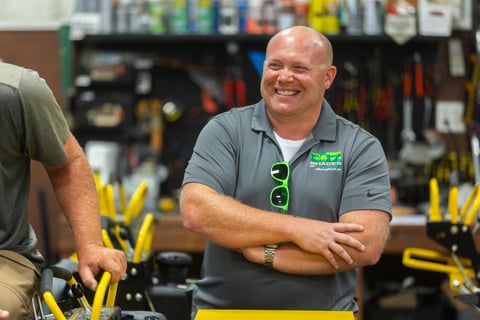
Cory is the heart and soul of Shades of Green. His dedication to doing right for our customers has been the driving force behind the company's success. With a degree in Turf Science from Purdue University, Cory continually strives to craft the best treatment plans using the latest technologies and innovative products, ensuring top-notch results for every client.


